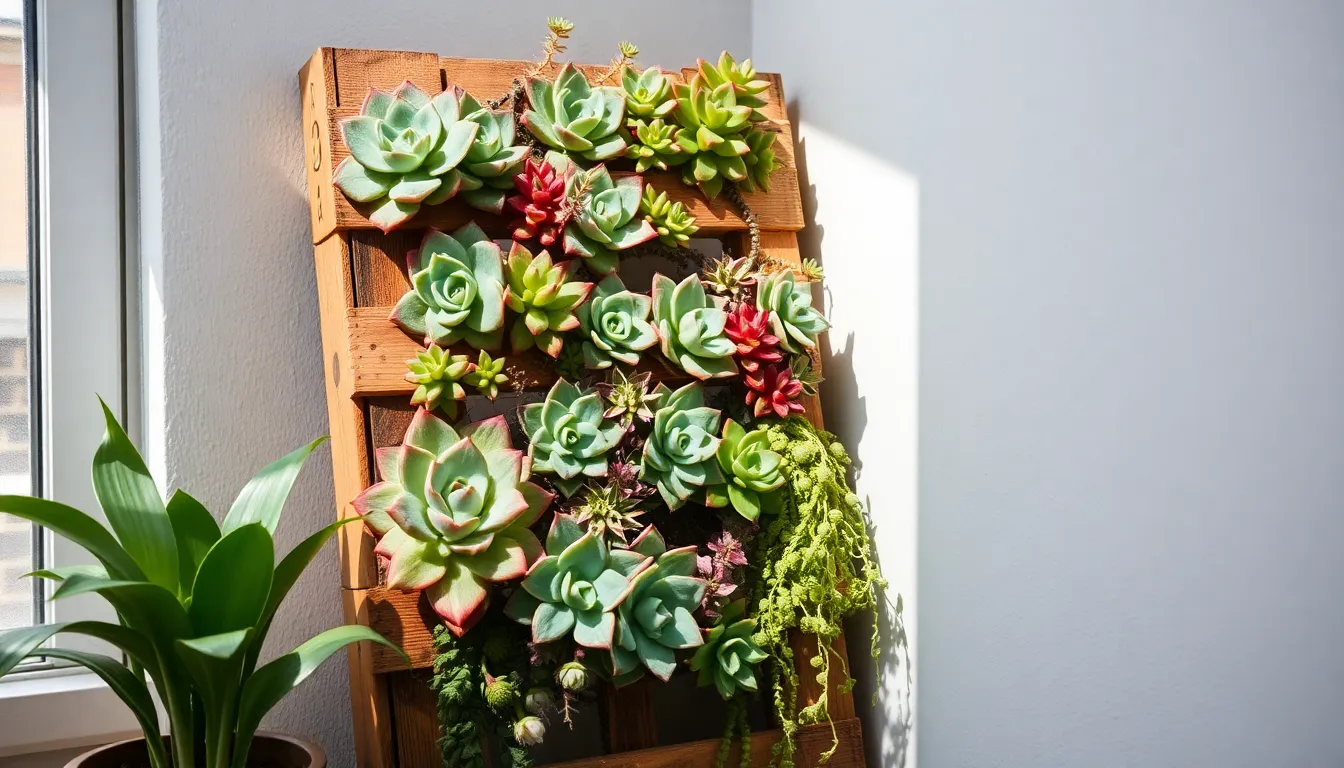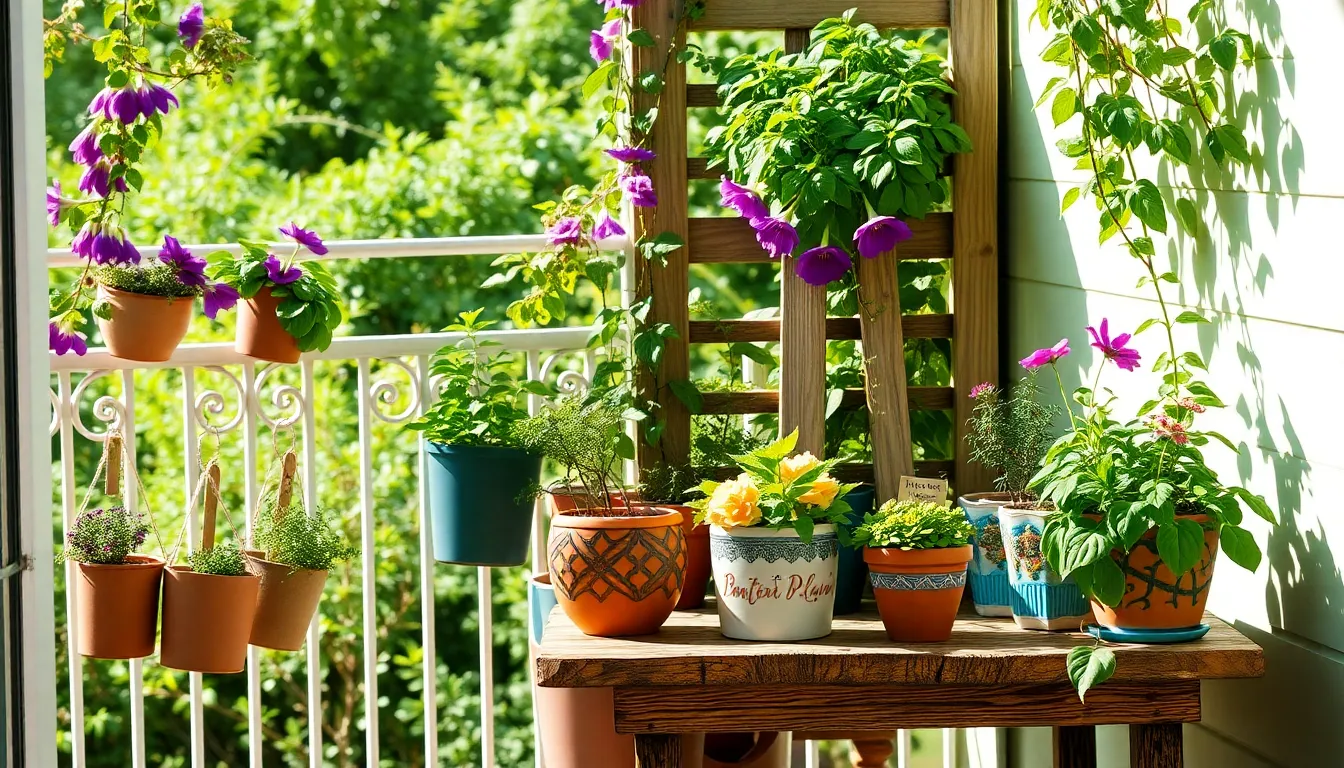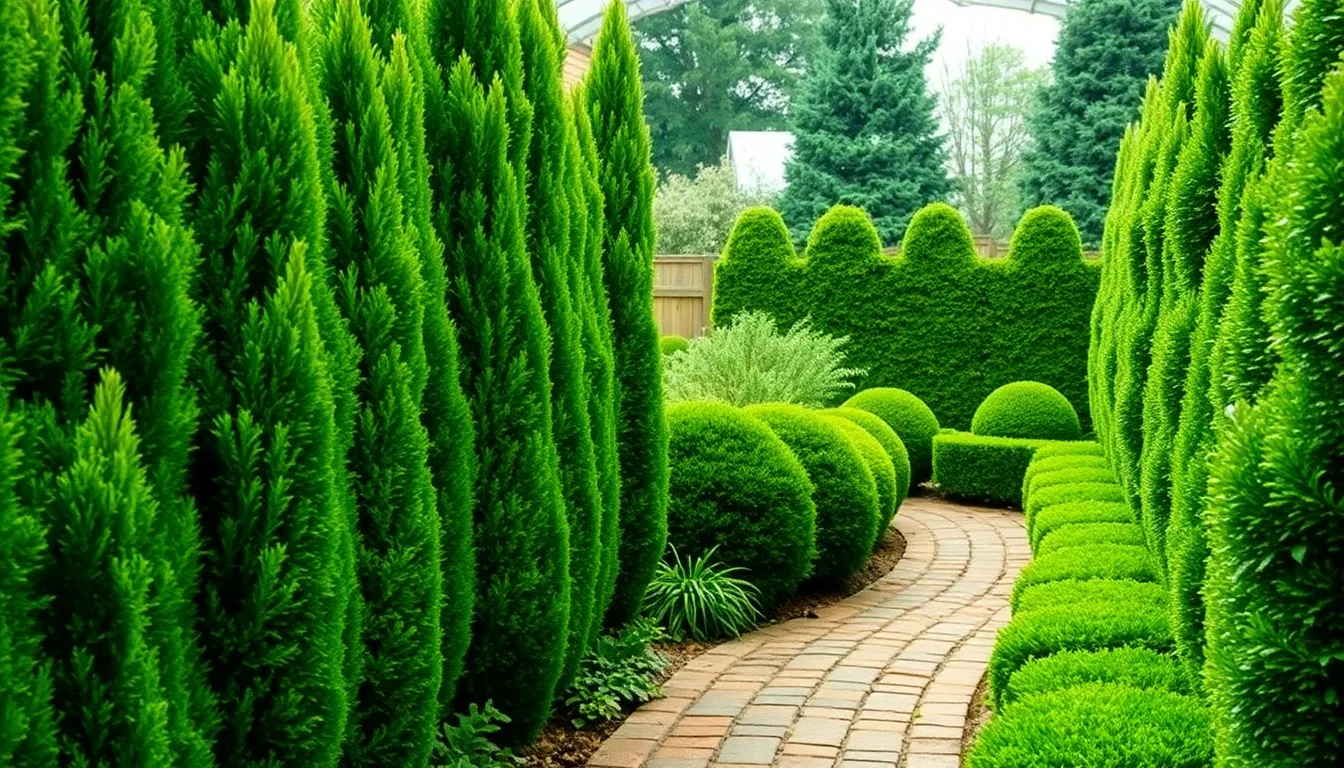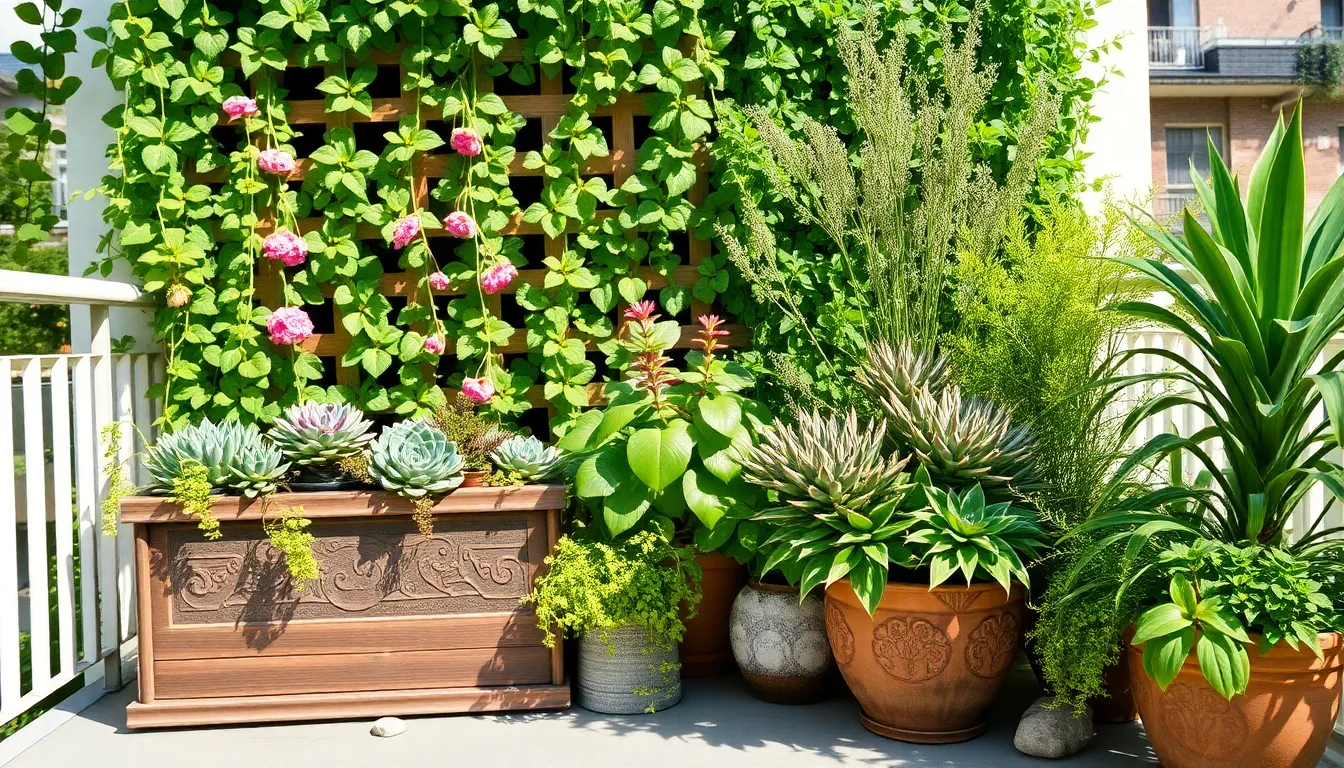Imagine transforming your cozy apartment or snug home office into a lush oasis, even in the tiniest of spaces. With a little creativity and the right guidance, small-space indoor gardening can become a rewarding hobby that brings nature right to your fingertips. Whether you’re a beginner looking to add a splash of green to your living room or a seasoned gardener seeking new projects, indoor gardening offers an exciting frontier to explore.
The magic of indoor gardening lies in its ability to invigorate both the space and the soul. Indoor plants not only purify the air but also enhance your well-being, making them a perfect addition to any small space. In this article, we’ll delve into a variety of DIY indoor gardening projects that cater to different skill levels and tastes, ensuring there’s something for everyone.
You’ll discover how to maximize your space with vertical gardens, create charming terrariums, and even grow your own herbs on a windowsill. We will guide you through practical tips and creative ideas that will help you cultivate your indoor sanctuary, regardless of your space constraints. By the end, you’ll have the confidence and knowledge to bring the beauty of nature indoors, transforming your small space into a personal garden retreat.
Choosing Compact Indoor Planters
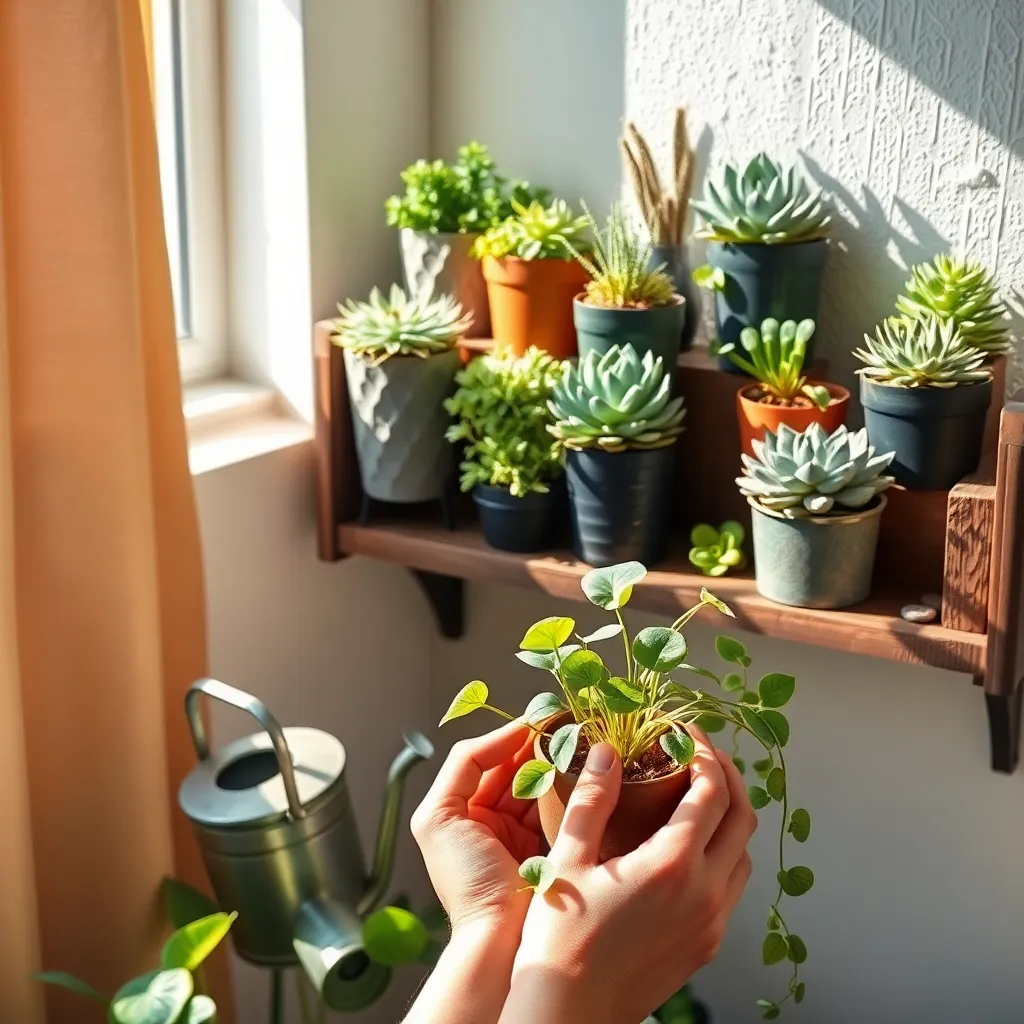
Selecting the right compact planter is crucial for maximizing your indoor gardening space. Opt for planters that are lightweight and easy to move, such as those made of plastic or fiberglass, which are perfect for small areas.
Consider the drainage capabilities of your planters, as this is vital for plant health. Look for containers with built-in drainage holes to prevent waterlogging and root rot, especially if you plan to grow moisture-sensitive plants.
For beginner gardeners, starting with smaller planters can help manage space and care requirements more easily. Use a good quality potting mix that retains moisture yet allows for airflow, ensuring your plants thrive in limited conditions.
Advanced gardeners might experiment with self-watering planters, which can be a game-changer in small spaces. These planters help maintain consistent moisture levels, reducing the frequency of watering and making plant care more efficient.
Vertical Garden Installation Tips
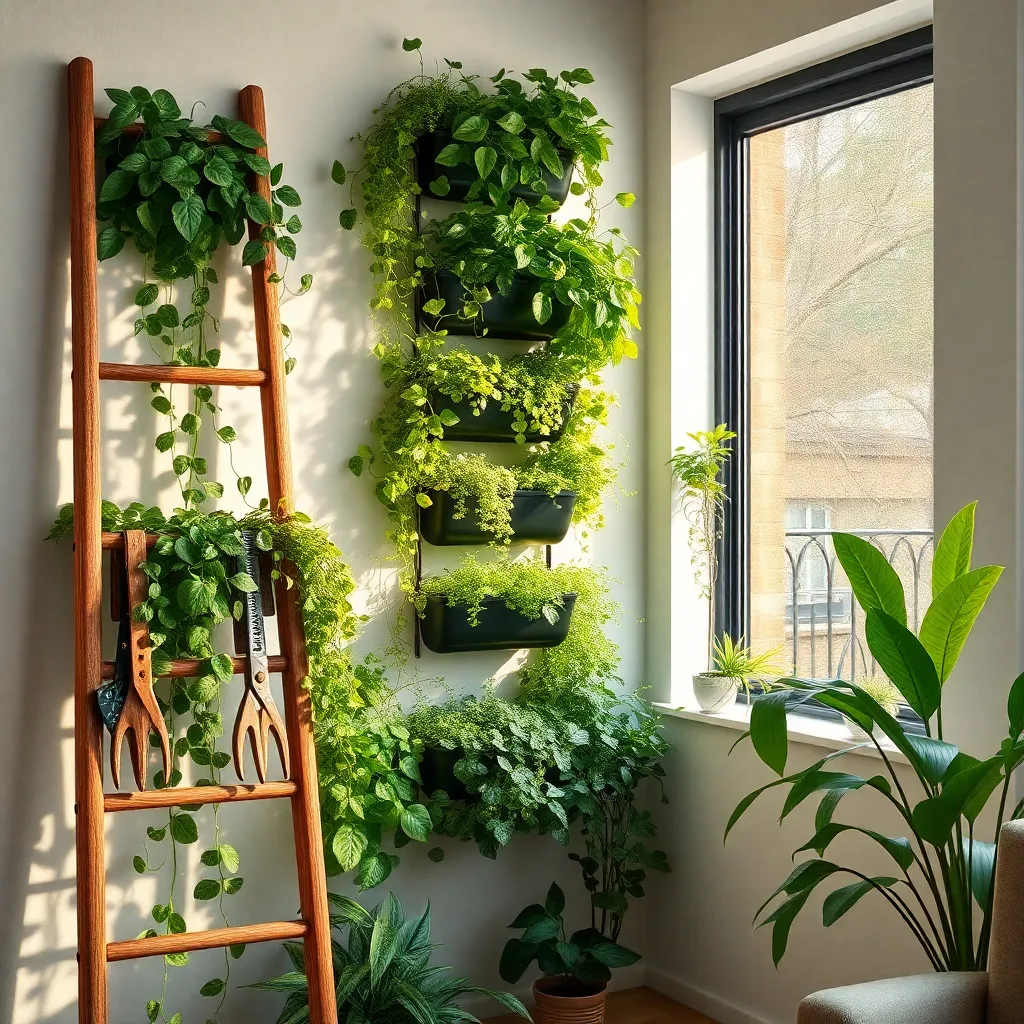
Vertical gardens are an excellent solution for small spaces, allowing you to maximize your growing area by using walls and other vertical surfaces. Begin by selecting a sturdy support structure, such as a trellis or a specially designed vertical garden kit, to ensure stability and ease of installation.
Consider the lighting conditions of your chosen location, as this will impact plant selection. Plants that thrive in low light, like pothos or ferns, are ideal for dimly lit spaces, while succulents and herbs prefer brighter areas.
Soil selection is crucial for vertical gardens, as it needs to be lightweight yet nutrient-rich. Use a high-quality potting mix with good drainage properties to prevent waterlogging and root rot, which can be fatal to plants.
Watering can be tricky with vertical gardens; a drip irrigation system is often the most effective method. Ensure even moisture distribution by installing a drip line or using self-watering planters, especially for hard-to-reach areas.
Finally, remember to fertilize your vertical garden regularly to maintain healthy growth. Use a balanced, water-soluble fertilizer every four to six weeks to provide essential nutrients, keeping your plants lush and vibrant.
DIY Hanging Garden Projects
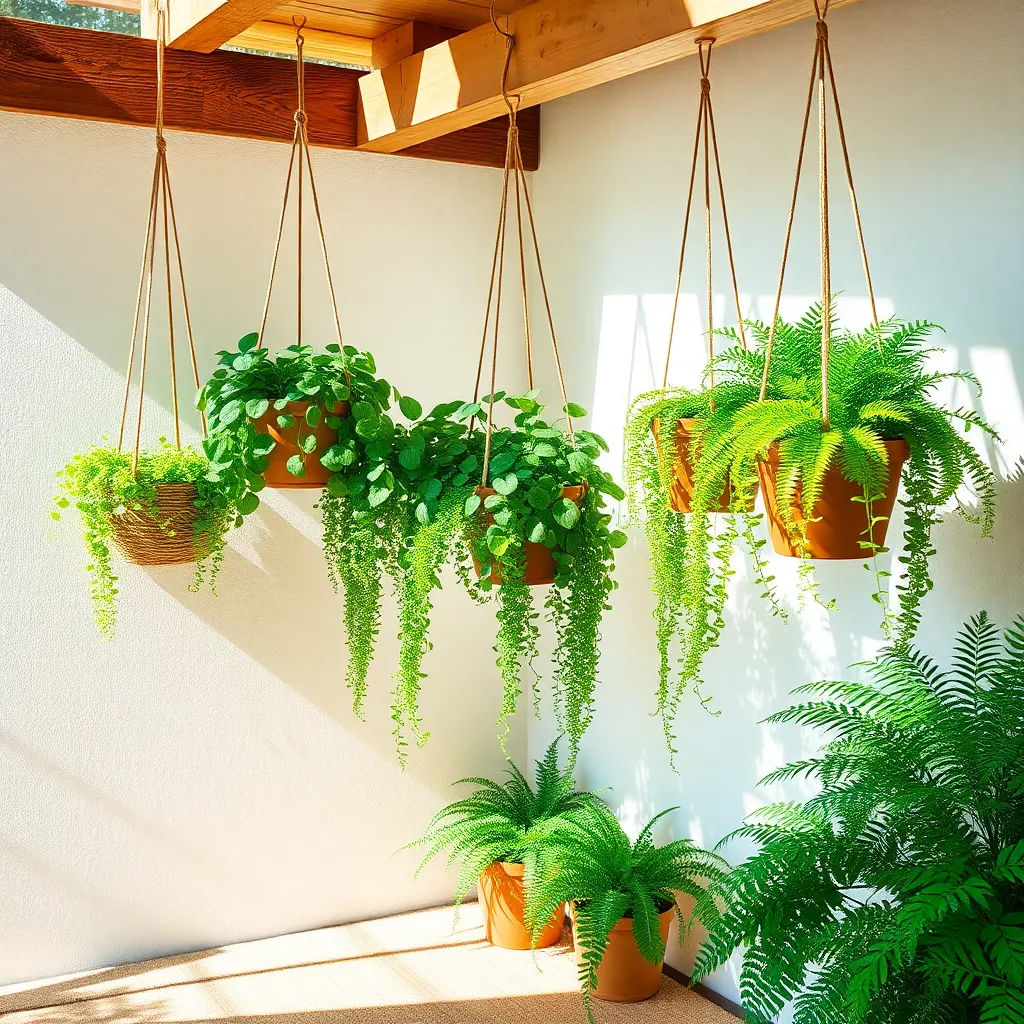
Creating a DIY hanging garden is a wonderful way to make the most of vertical space in small areas. Start by selecting lightweight containers with drainage holes to ensure excess water can escape, preventing root rot.
Consider using a variety of plants that thrive in similar conditions to simplify care. Herbs such as basil, thyme, and mint are excellent choices, as they enjoy the same amount of sunlight and watering frequency.
Opt for a high-quality potting mix that retains moisture yet drains well, such as one with added perlite or vermiculite. Water your hanging garden when the top inch of soil feels dry—this is usually once a week, but it may vary based on your indoor climate.
For those wanting to add a decorative touch, consider incorporating trailing plants like pothos or string of pearls. These plants are relatively low-maintenance and add a lush, cascading effect to your hanging garden.
Maximizing Light in Small Spaces
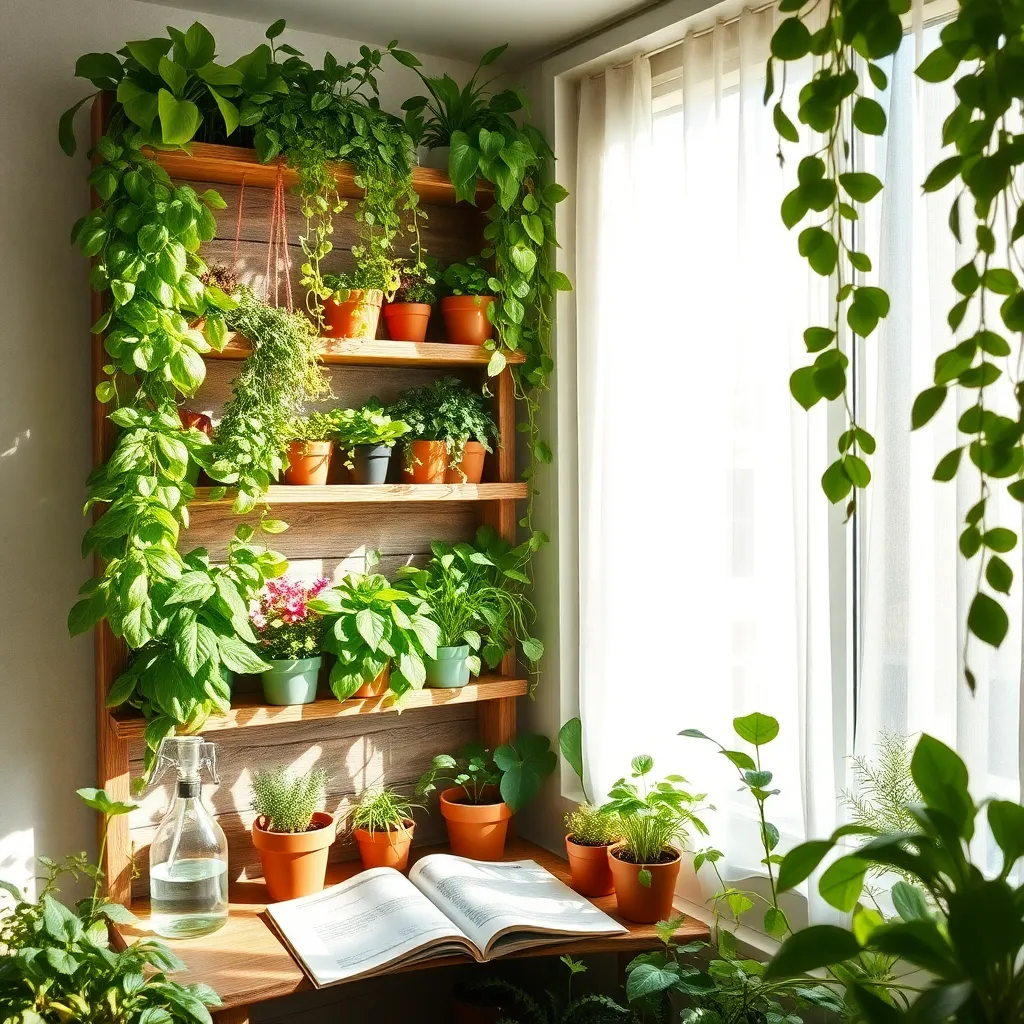
To make the most of the limited light in small spaces, consider positioning your plants strategically. Place them near windows where they can receive the maximum amount of natural light throughout the day.
Utilizing reflective surfaces can also enhance the light your plants receive. Mirrors or metallic surfaces placed opposite your windows can bounce light back onto your plants, effectively doubling their exposure.
Another great method is to choose plants that naturally thrive in lower light conditions. Examples include the snake plant and pothos, both of which are resilient and adapt well to indirect light.
For more advanced gardeners, supplementing natural light with grow lights can provide the necessary spectrum for plant growth. LED grow lights are energy-efficient and can be tailored to meet the specific needs of your plants, ensuring they thrive even in dim environments.
Low-Maintenance Plant Selection Guide
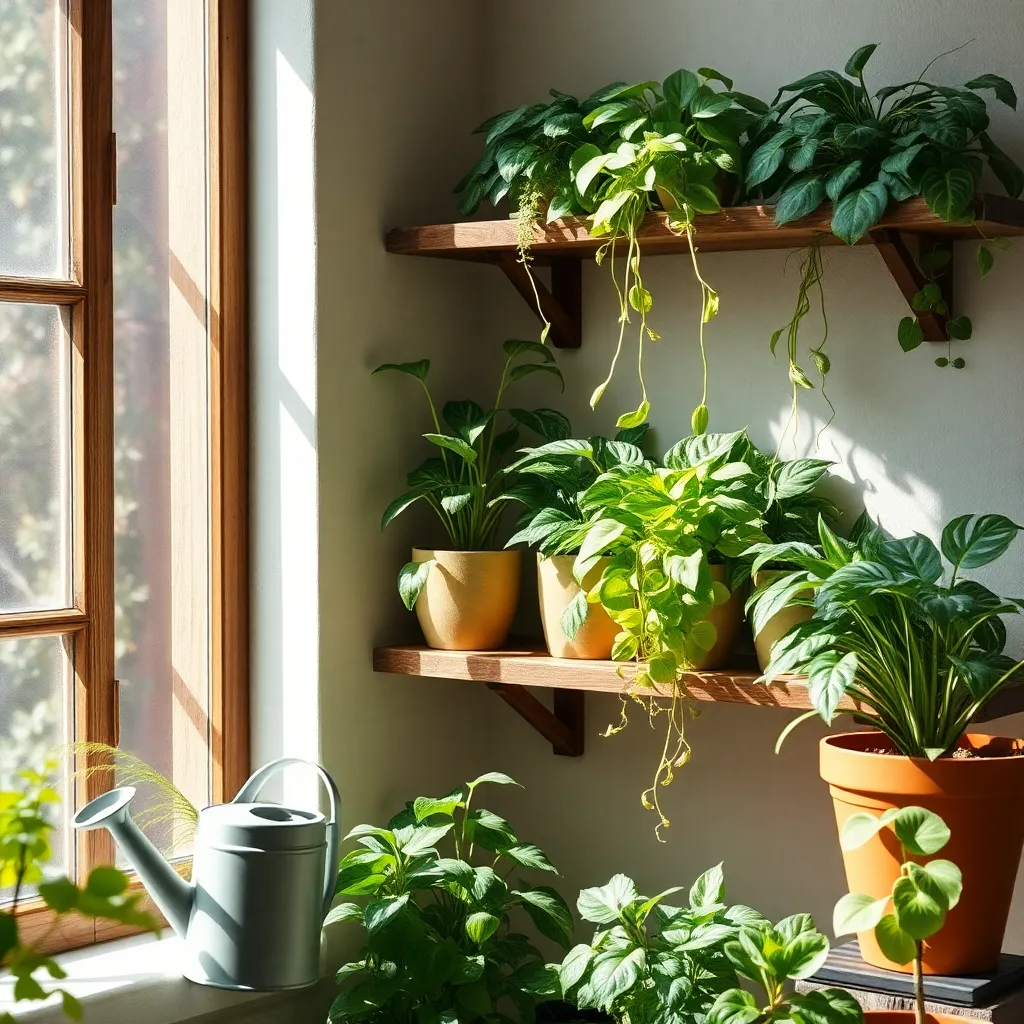
Choosing the right plants for your indoor garden can make all the difference in maintaining a beautiful, low-maintenance space. Opt for hardy plants like snake plants and ZZ plants, which thrive in a variety of lighting conditions and require minimal care.
For those who frequently forget to water, consider succulents and cacti. These plants store water in their leaves, allowing them to survive in dry conditions and making them perfect for busy gardeners.
When selecting plants, it’s important to consider the humidity levels of your home. Spider plants and peace lilies are excellent choices as they tolerate both dry air and low light, which are common in indoor environments.
Use a well-draining potting mix to ensure your plants do not sit in water, which can lead to root rot. A mix containing perlite or sand helps to improve drainage and aeration, crucial for maintaining healthy roots.
Conclusion: Growing Success with These Plants
As we wrap up our exploration of ‘DIY Indoor Gardening Projects for Small Spaces,’ let’s revisit the five key relationship concepts we’ve cultivated together: communication, patience, nurturing, shared growth, and adaptability. Each of these principles, much like a thriving indoor garden, requires attention and care. Communication helps you and your partner align on your gardening goals, while patience enables you to appreciate the journey of growth. Nurturing your plants—and your relationship—fosters resilience, while shared growth encourages teamwork and strengthens your bond. Lastly, adaptability ensures you can both weather any storm, adjusting and thriving in your small space.
Now, take a moment to choose one indoor gardening project from the article and plan a date to start it together. This shared activity will enrich your relationship, providing both a sense of accomplishment and a beautiful, green space to enjoy.
Remember to save this article for future reference, as it will serve as a valuable guide on your journey to relationship success. By embracing these concepts, you’re not only enriching your living space but also sowing the seeds for a flourishing, lasting relationship. Bookmark this page and plant the seeds of love and growth today!

